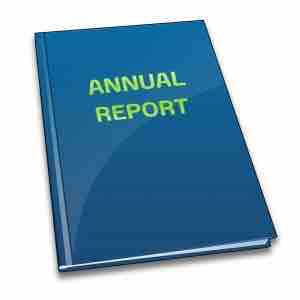Uses Of the Balance Sheet
The Balance Sheet is used for financial reporting and analysis as part of the suite of financial statements .

Using the Balance Sheet
The balance sheet is one of the financial reports included in a company's annual report.
Management's analysis of financial statements primarily relates to parts of the company. Using this approach, management can plan, evaluate, and control operations within the company. Management obtains any information it wants about the company's operations by requesting special-purpose reports. It uses this information to make difficult decisions, such as which employees to lay off and when to expand operations.
Investors, creditors, and regulatory agencies generally focus their analysis of financial statements on the company as a whole. Since they cannot request special-purpose reports, external users must rely on the general purpose financial statements that companies publish. These statements include the balance sheet, an income statement, a statement of stockholders' equity, a statement of cash flows, and the explanatory notes that accompany the financial statements.
Users of financial statements need to pay particular attention to the explanatory notes, or the financial review, provided by management in annual reports. This integral part of the annual report provides insight into the scope of the business, the results of operations, liquidity and capital resources, new accounting standards, and geographic area data.
Financial statement analysis consists of applying analytical tools and techniques to financial statements and other relevant data to obtain useful information. This information reveals significant relationships between data and trends in those data that assess the company's past performance and current financial position. The information shows the results or consequences of prior management decisions. In addition, analysts use the information to make predictions that may have a direct effect on decisions made by users of financial statements.
Balance Sheet Substantiation
The balance sheet is an especially useful tool when it comes to the substantiation of various accounts. Balance sheet substantiation is the accounting process conducted by businesses on a regular basis to confirm that the balances held in the primary accounting system of record are reconciled (in balance with) with the balance and transaction records held in the same or supporting sub-systems. It includes multiple processes including reconciliation (at a transactional or at a balance level) of the account, a process of review of the reconciliation and any pertinent supporting documentation, and a formal certification (sign-off) of the account in a predetermined form driven by corporate policy
Balance sheet substantiation is an important process that is typically carried out on a monthly, quarterly and year-end basis. The results help to drive the regulatory balance sheet reporting obligations of the organization. Historically, substantiation has been a wholly manual process, driven by spreadsheets, email and manual monitoring and reporting. In recent years software solutions have been developed to bring a level of process automation, standardization and enhanced control to the substantiation or account certification process. These solutions are suitable for organizations with a high volume of accounts and/or personnel involved in the substantiation process and can be used to drive efficiencies, improve transparency and help to reduce risk.